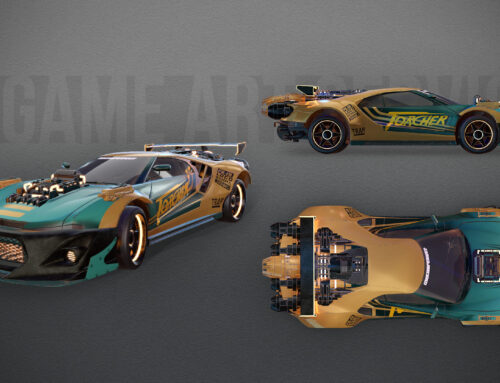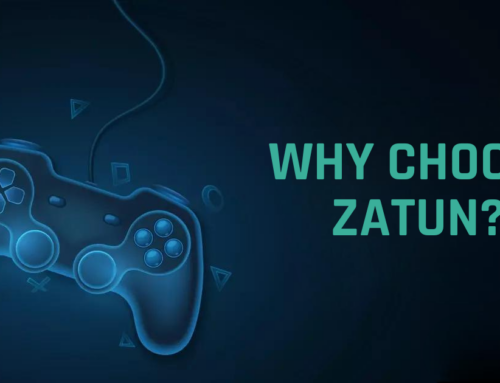Game Art Outsourcing: 5 Mistakes That Could Kill Your Project (and How to Avoid Them)
Picture this: Your game launches in six weeks. You open the latest art delivery from your outsourcing partner, and your heart sinks. The character models look like they belong in a completely different universe. The environments? They’re gorgeous—but for the wrong game entirely.
Sound familiar?
Look, outsourcing game art isn’t rocket science. But somehow, perfectly smart developers keep making the same mistakes that turn dream projects into budget-draining nightmares. I’ve watched studios blow through their entire art budget only to end up with assets they can’t use.
Here’s the thing—these disasters are 100% avoidable. I’m going to walk you through the five mistakes that kill outsourcing projects, and more importantly, show you exactly how to dodge them.
Mistake #1: Skipping the Art Bible (AKA “They’ll Figure It Out”)
Ever tried explaining your game’s visual style over email? Yeah, that’s like describing colour to someone who’s never seen it.
Too many studios think they can get by with a few reference images and a “make it look cool” brief. Then they’re shocked when the art comes back looking nothing like what they imagined.
Here’s what happens: Your outsourcing team fills in the gaps with their own interpretation. And their interpretation of “gritty post-apocalyptic” might be your nightmare of “generic zombie shooter.”
The fix is simple but crucial: Create a comprehensive art bible before you even start looking for partners. I’m talking about a document that covers everything—colour palettes, lighting principles, character proportions, material treatments, even the mood you’re going for.
Think of it this way: Would you build a house without blueprints? Your art bible is those blueprints.
Pro tip: Include examples of what you DON’T want, too. Sometimes showing someone the opposite of your vision is the fastest way to get them on the right track.
Mistake #2: Choosing Based on Price Alone
We’ve all been there. You’re looking at quotes, and one vendor is 40% cheaper than everyone else. Seems like a no-brainer, right?
Wrong.
Cheap art outsourcing is like cheap pizza—you get what you pay for, and you’ll probably regret it later.
What really happens with bargain-basement pricing:
- Quality takes a nosedive (think mobile game assets when you need console-quality work)
- Communication becomes a nightmare (good luck getting revisions done quickly)
- Hidden costs pop up everywhere (“Oh, you wanted the textures too? That’s extra.”)
- Project timelines stretch like taffy
Here’s how to choose smartly:
Don’t pick the cheapest. Don’t pick the most expensive either. Look for the vendor who demonstrates they understand your project and can deliver consistent quality within your timeline.
Ask for a small test project first. Pay them to create one character or environment piece. It’ll cost you upfront, but it’s way cheaper than discovering compatibility issues after you’ve committed to 200 assets.
Red flags to watch for:
- Quotes that seem too good to be true (they usually are)
- Portfolios with wildly inconsistent quality
- Vendors who don’t ask questions about your project
Mistake #3: Communication Breakdown (The Silent Treatment)
Nothing kills an outsourcing project faster than radio silence.
You know how this goes: Everything starts great. The kickoff call goes smoothly. Then… crickets. You’re left wondering if your art team fell off the face of the earth.
Meanwhile, your outsourcing partner is working in isolation, making assumptions, and heading in the wrong direction. By the time you reconnect, they’ve spent weeks creating beautiful art for the wrong game.
The solution? Build communication into your contract:
Set up mandatory check-ins. I’m talking weekly calls minimum, with daily updates during critical phases. Use collaboration tools like Frame.io for art reviews or Slack for quick questions.
Create a feedback loop that actually works. When you get art deliveries, respond within 24-48 hours with specific, actionable feedback. None of this “make it more heroic” stuff—give them concrete direction they can act on.
Here’s a game-changer: Assign one person on your team as the single point of contact. Having five different people giving conflicting feedback is a recipe for chaos.
Mistake #4: Ignoring Cultural and Time Zone Realities
Let’s talk about the elephant in the room—most game art outsourcing happens across continents. And that brings challenges most studios completely underestimate.
Time zones aren’t just about scheduling calls. They affect everything from feedback turnaround to emergency fixes. When your team is asleep, your outsourcing partner is working. When they need clarification, you’re unconscious.
Cultural differences matter too. Direct feedback that works great with your local team might come across as harsh or confusing to partners from different backgrounds. What you consider “constructive criticism” might be interpreted very differently.
Smart strategies that actually work:
- Build buffer time into every milestone. If something normally takes two weeks, plan for three when working across time zones.
- Use visual feedback tools. Screenshots with markup are universal language.
- Understand your partner’s cultural communication style. Some teams need more explicit direction, others prefer collaborative discussions.
- Overlap your working hours for at least 2-3 hours daily for real-time problem-solving.
Pro tip: Test your communication workflow early. Don’t wait until crunch time to discover that your feedback process doesn’t work across 12 time zones.
Mistake #5: No Quality Control Process (Crossing Your Fingers and Hoping)
Here’s the scenario that gives producers nightmares: Your outsourcing team delivers a batch of assets. They look great in isolation. Then you drop them into your game engine and… nothing works. Wrong scales, incompatible formats, missing textures, broken rigs.
Back to square one, with your deadline breathing down your neck.
Why does this happens?
Most studios treat quality control like an afterthought. They assume their outsourcing partner will handle technical specifications perfectly. Big mistake.
Your quality control process should be bulletproof:
Before work starts:
- Define technical specifications in excruciating detail (polygon counts, texture resolutions, naming conventions, file formats)
- Provide templates and examples of properly formatted assets
- Test their pipeline with a single asset before scaling up
During production:
- Implement milestone reviews with actual in-engine testing
- Check assets in your actual game environment, not just as pretty renders
- Verify every deliverable meets your technical requirements
Create a technical bible alongside your art bible. Your artists might nail the visual style but completely miss the technical requirements that make assets actually usable in your game.
Emergency backup plan: Always have a local technical artist who can troubleshoot issues quickly. When you discover problems at 2 AM before a milestone, you need someone who can fix them fast.
The Bottom Line: Success Is in the Details
Look, outsourcing game art doesn’t have to be a nightmare. Some of the most beautiful games ever made relied heavily on external teams. The difference between success and disaster comes down to preparation, communication, and realistic expectations.
Here’s your action plan:
- Invest time upfront. A comprehensive art and technical bible pays for itself ten times over.
- Choose partners, not just vendors. Find teams that understand your vision and can challenge your ideas constructively.
- Communicate relentlessly. Silence kills projects faster than bad art.
- Plan for reality. Time zones, cultural differences, and technical hiccups are facts of life, not surprises.
- Test everything. Quality control isn’t optional—it’s survival.
The studios that nail outsourcing don’t just avoid these mistakes—they turn external partnerships into competitive advantages. Their games ship on time, on budget, and look incredible.
Your project can be one of them. But only if you’re willing to do the work upfront to avoid these totally preventable disasters.
What’s your experience with game art outsourcing? Have you survived any of these mistakes, or discovered new ones I haven’t covered? Let me know in the comments—war stories from the trenches help everyone build better games.




